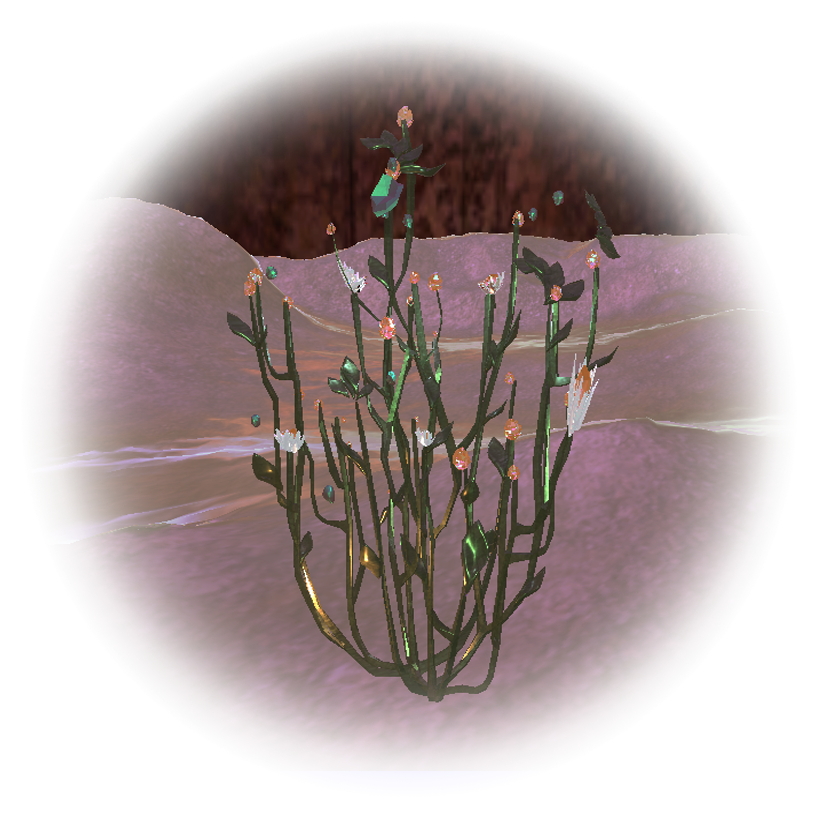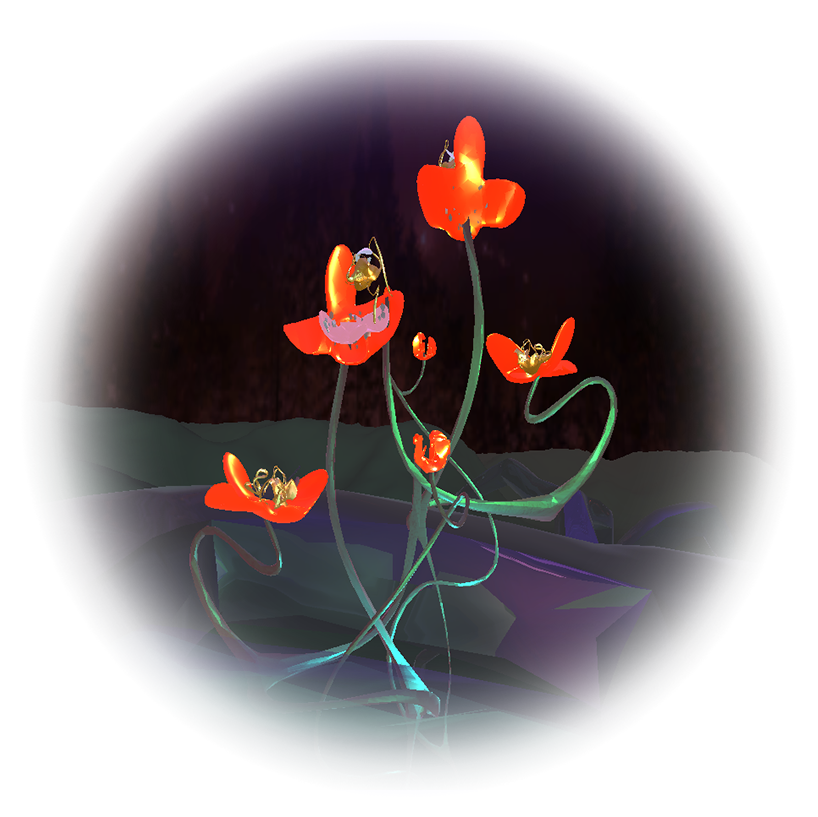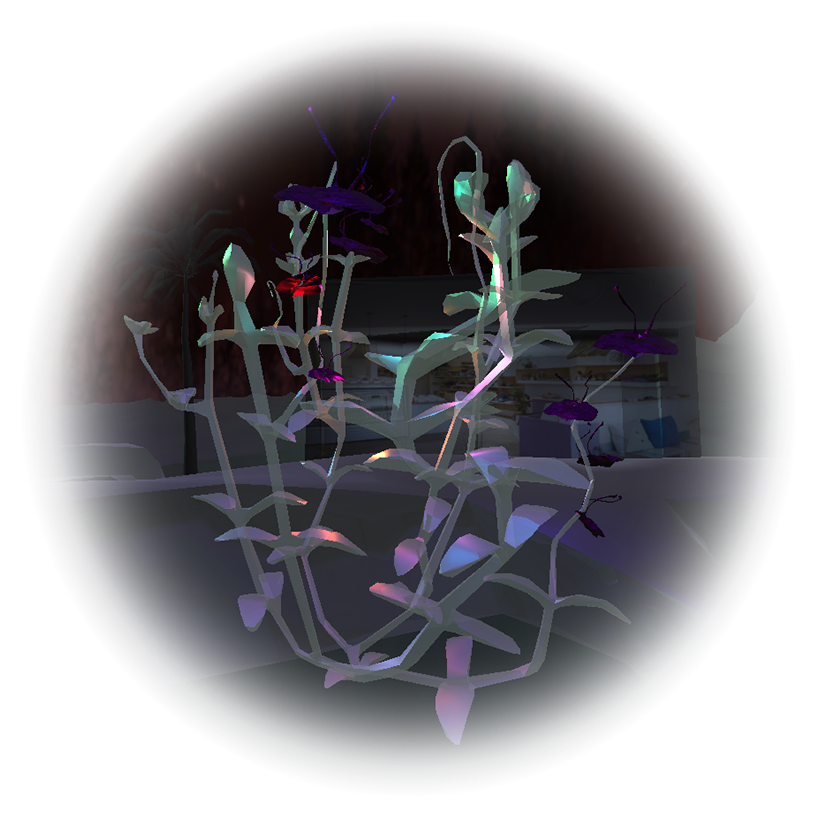ALTAR
+ INFO
Leave a note for the plant elders
Please use a web browser to access the immersive audiovisual experience
From the colonization of Tongva, Chumash, and Kizh land to the ongoing urbanization of Los Angeles, whole ecological communities have been uprooted without acknowledgement.
Requiem for Lost Plants calls for reversing death. Artists Alice Yuan Zhang and Alexander Kaye digitally resurrect diminishing plant elders to share their stories for a global public through an immersive online environment, and for locals through site-specific augmented reality filters.
Throughout the many millennia that these plants have called the land home, long before human concepts of ‘property rights’ and ‘manifest destiny’, they have cultivated know-how for not just their own survival but for the wellbeing of whole ecosystems. Each plant holds a nuanced story of collaboration and generosity so bountifully found in nature. We risk losing this wisdom as our own challenges of greed, neglect, and myopia continue to push aside and erase the deep generational knowledge of Indigenous peoples and make it increasingly difficult for the ecosystems themselves to survive. As one metropolis node of many in 3hd Festival’s festival, Requiem for Lost Plants highlights this hidden narrative of Los Angeles to invite urban dwellers’ curiosity for ecological pasts and futures in their own locales.
SALIX GOODDINGII | GOODDING’S BLACK WILLOW

A mothering cornucopia, offering food, shelter, cover for hunting, medicine (what we know as aspirin), and tools and resources for the many who call the river home, Goodding’s Black Willow is especially impacted in Los Angeles. Close to 100 percent of the original wetlands and 90 to 95 percent of in-stream riparian habitat within the Los Angeles River watershed have been lost due to urbanization and the 51-mile dam.
The willow is resurrected by the Taylor Tard, where it remediates soil contaminated from a century of train activity.
CLICK TO ACCESS AR FILTERLAYIA CARNOSA | BEACH LAYIA

Beach Layia is part of a unique community that withstands the acidity of ocean waters and harshness of the sand and sun, while stabilizing sand dunes and preventing beach erosion. Their habitats have often been replaced with invasive species like ice plants for that purpose, or eradicated in the process of beachfront urban development.
The beach layia is resurrected between Dockweiler Beach real estate developments and LAX runways built for commercial air travel.
CLICK TO ACCESS AR FILTERPSEUDOGNAPHALIUM CALIFORNICUM | CALIFORNIA EVERLASTING

A pioneering species of the Chaparral community, California Everlasting gives off a rich and sweet aroma and has long provided respiratory medicine for the Chumash people, who recognize this year’s especially generous bloom as an offer of remedy for the pandemic.
The California Everlasting is resurrected by Discovery Well Park, which stands commemorating the first oil strike in Huntington Beach in 1920.
CLICK TO ACCESS AR FILTERSPHAERALCEA AMBIGUA | DESERT GLOBEMALLOW

The Desert Globemallow has been the chosen home for globe mallow bees who harvest pollen and take naps between their petals. Unlike the honey bee, most bees specialize in the flowers they visit, highlighting a complex web of relationships often impacted by disturbing a single species.
The Desert Globemallow is resurrected near Interstate 110 by Arroyo Seco Parkway, the first freeway built in the western United States.
CLICK TO ACCESS AR FILTERSALVIA APIANA | SACRED WHITE SAGE

A keystone species of the coastal sage scrub community White Sage offers a healing presence for the air and spirit and is traditionally picked by Indigenous hands with great care for ceremony. Recent ‘wellness’ trends have prompted unsustainable and violent harvesting, discarding the principle of reciprocity with nature for sake of commercial gain.
The White Sage is resurrected at House of Intuition in West Hollywood, one of many places where it has been bought and sold liberally.
CLICK TO ACCESS AR FILTERARTIST WALKTHROUGH
Alice Yuan Zhang and Alexander Kaye hosted a guided project walkthrough in conversation with Kenny Zhao on NAVEL Twitch on November 11, 2020, discussing quotes from Arts of Living on a Damaged Planet and principles for renewing ecological empathy in the anthropocene.
ABOUT THE ARTISTS
Requiem for Lost Plants is created by Los Angeles-based artists Alice Yuan Zhang and Alexander Kaye for 3hd Festival 2020: UNHUMANITY, commissioned by Creamcake and NAVEL.
Alice Yuan Zhang (she/her) is a mixed reality artist, designer, and program organizer. Her work bridges the sacredness of natural environments with the speculative power of human-made ones, inviting exploration into interspecies empathy, generative networks, and the illusion of agency. She is the co-organizer of virtual care lab, a current resident artist at CultureHub, and an involved member of NAVEL. Alice studied at University of California, Berkeley.
Web: https://aliceyuanzhang.com/ IG: @aliceyuanzhang
Alexander Kaye (he/him) is an artist born near Detroit Michigan and currently residing in Los Angeles California. His practice began in writing and producing music and has since expanded into sound and visual art. He creates experimental music with modular synthesis, field recordings, audio manipulation, chance/aleatoric techniques, and traditional instrumentation. Often finding creative guidance through random operations, he embraces unknown variables as part of the process that influences all of his work.
Web: https://akaye.world/ IG: @akaye.world
In-depth ecological guidance was generously provided by Parker Davis at Hahamongna Native Plant Nursery, Sophie Katz at UCLA Botanical Garden, and Mika Perron at Audubon Center. Additional thanks to our friends at Roundhouse Platform for sharing their knowledge on the Los Angeles landscape.
The project was implemented online by Jon Lucas (@jonlucaswebsites) with Creamcake. Site-specific augmented reality filters were installed by Los Angeles-based photographer and NAVEL Community Program Intern Gbenga Komolafe (@gbeng.a).